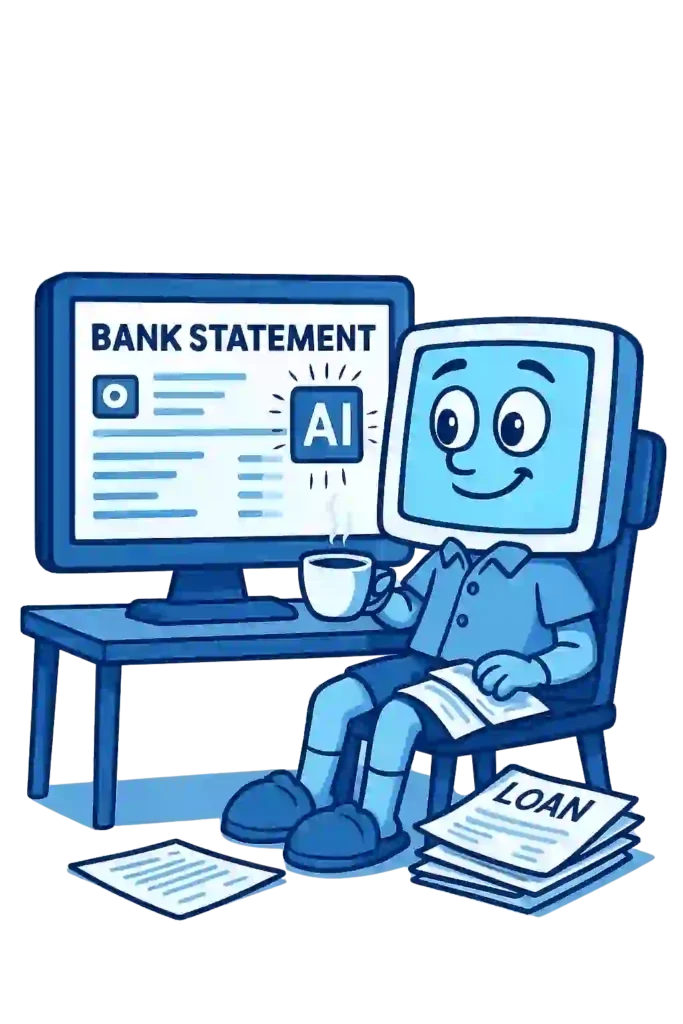Ever stared at a 60-page bank statement and thought, “There goes my afternoon”? You’re not alone. Loan teams across NBFCs and banks juggle stacks of statements, rushing to verify incomes, spot red flags, and approve loans before the next application lands. But here’s the thing—manual statement reviews are no longer the gold standard. Today, smart lenders are moving fast with automated statement analysis. Let’s break down how this shift is not just saving time, but actually helping you approve smarter, safer loans.
What Is Statement Analysis—and Why Does It Matter So Much in Lending?
Imagine trying to judge a borrower’s credibility without seeing the full financial picture. That’s exactly why statement analysis is vital. It’s the process of reviewing bank statements to understand income flow, spending behavior, EMIs, cheque bounces, and potential risk triggers. Traditionally done manually, it’s slow and error-prone. But with automation? You get structured insights within minutes—clean, fast, and audit-ready. That’s a big win for loan teams that don’t have hours to spare.
Why Is Manual Review Slowing Lenders Down?
Let’s say your credit team handles 40 loan applications a day. Now, each one requires scanning 3–6 months of bank statements. That’s at least 15–30 minutes per file if you’re being quick. Multiply that. You’ll see why many loan officers feel buried. Plus, humans get tired. Cheque bounces get missed. EMI patterns slip through. Manual statement analysis isn’t just slow—it’s risky. And in lending, small misses can lead to big losses.
🤖 How Do Bank Statement Analysers Actually Work?
Think of them as your digital credit analyst—one that never sleeps, never skips a line. These tools use OCR (Optical Character Recognition), AI, and Machine Learning to read PDFs, images, or CSVs and turn them into structured data. Here’s what happens in seconds:
- Data Extraction: Pulls all transactions, balances, account numbers.
- Categorization: Tags inflows, expenses, EMIs, rent, salary, etc.
- Risk Flags: Spots cheque bounces, frequent overdrafts, sudden income jumps.
- Reports: Generates a borrower snapshot you can act on instantly.
In short, the tool does the heavy lifting. You just focus on decisions.
Can Statement Analysis Tools Really Predict Risk Better Than Humans?
This is what lenders often ask—and it’s fair. The answer? Yes, often. Why? Because software doesn’t get tired or biased. It flags even the tiniest inconsistency: bounced cheques two months ago, a steady EMI missed twice, or that random ₹90,000 credit with no matching debit. It’s not magic. It’s just consistency, Automated bank statement analyser runs on logic—not gut feel. And that makes all the difference.
How It Speeds Up Loan Approvals Without Sacrificing Accuracy
Fast doesn’t mean careless. With automated tools, you don’t just cut down processing time—you improve it. Here’s how:
- No manual page-flipping—see summaries at a glance.
- Red flags come highlighted—so nothing hides in fine print.
- Standard rules apply every time—ensuring fair assessments.
- More files reviewed daily—without needing more staff.
It’s not just faster. It’s smarter, safer, and ready to scale.

What About Fraud? Does Automation Help There Too?
Yes—and this is where it really shines. Tools trained for statement analysis can detect fraud better than the human eye. Here’s what they typically catch:
- Duplicate or doctored pages
- Fake salary inflows or looped transactions (round-tripping)
- Inconsistent account numbers
- Suspicious balance spikes before application
It’s not just about saving time. It’s about saving your institution from future regret.
What Should You Ask Before Choosing a Statement Analysis Tool?
Not all tools are created equal. Before jumping in, ask:
- Can it read all statement types—PDFs, images, scanned docs?
- Does it flag irregular income and EMI behavior?
- Can it integrate with your CRM or LOS?
- Does it support real-time risk scoring?
- What’s the level of fraud detection and audit tracking?
If these answers aren’t solid, keep looking. The tool should support your growth—not slow you down.
What’s the Future of Loan Assessment with Statement Analysis?
Here’s what’s already happening behind the scenes:
- AI will soon suggest loan terms based on behavioral insights.
- Open banking APIs will pull bank data instantly—with borrower consent.
- Hyper-personalized lending is around the corner—because analysis will know more than just balances.
This isn’t tomorrow. It’s happening now.
Final Word: Stop Guessing. Start Using Data.
If your loan approvals still rely on eyeballing PDFs, it’s time to upgrade. Automated Bank statement analyser isn’t just about being fast—it’s about being confident. Confident that your approvals are accurate. That your fraud risk is low. That your team isn’t stuck scrolling pages all day.
In lending, time is money. But trust? That’s everything.



